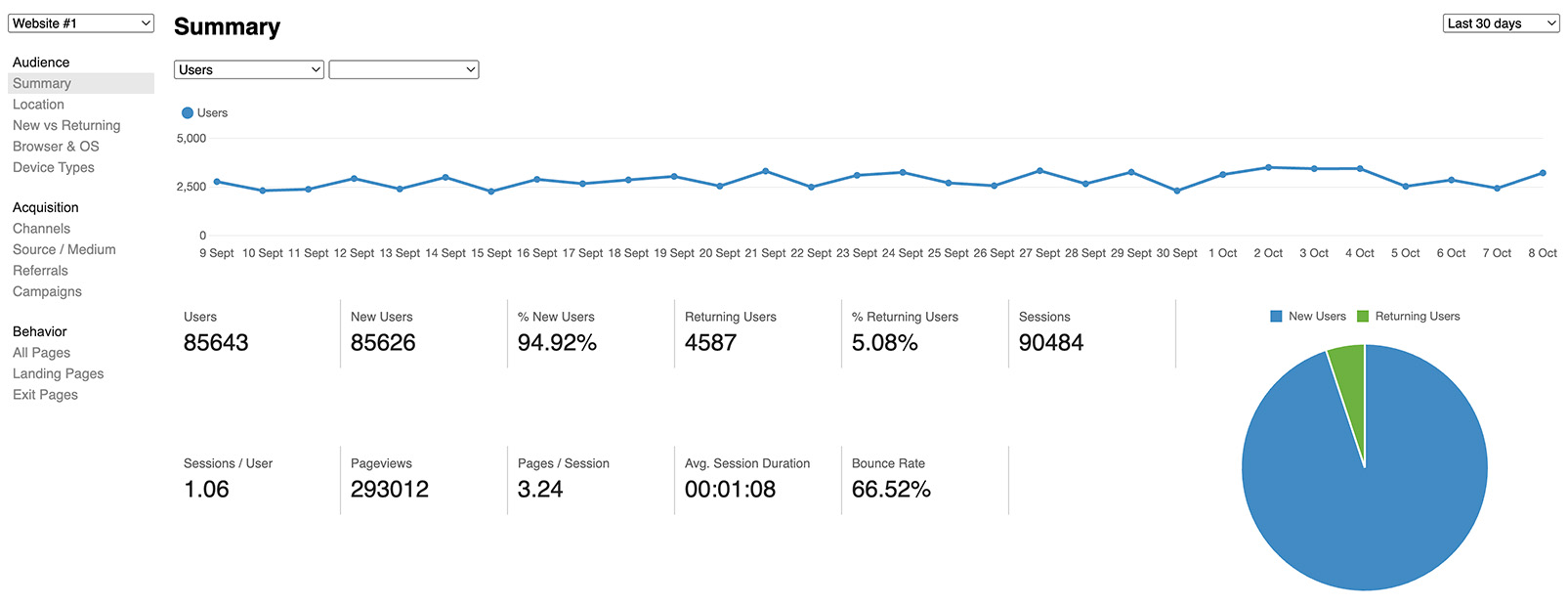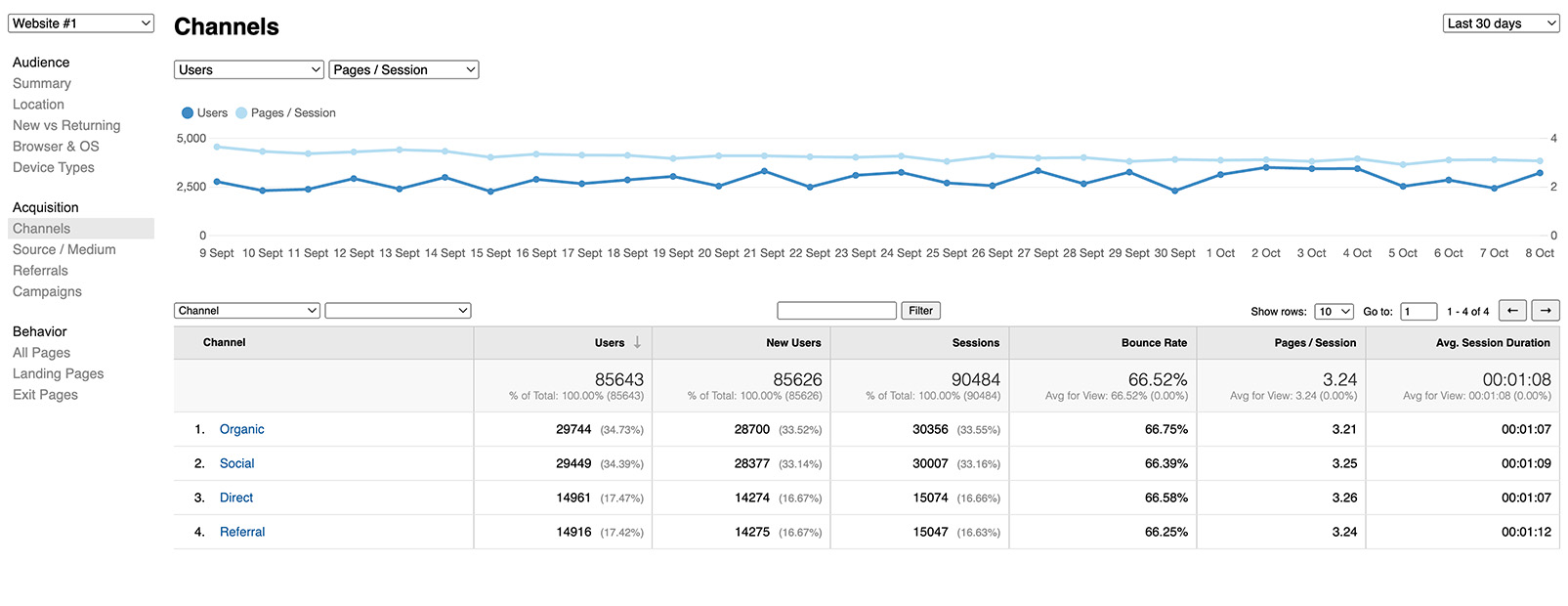Log Analytics
Privacy–first web analytics software that cannot be tracked or blocked.
No JavaScript, no cookie consents, no data sharing and you still get all the statistics!

How do most web analytics work?
There are many web analytics solutions on the market and almost all of them require placing a small JavaScript code on every page of your website. That small code downloads a bigger code that collects all the information and sends it somewhere for analysis and reporting to you.
This works just fine unless you want to:
- Share nothing with third–parties;
- Leave no cookies;
- Track visitors that block ads and trackers;
- Tell no one that you track them.
Unfortunately, most of the “standard” web analytics solutions fail when it comes to the list above. The JavaScript code snippet is an obvious flag that the visit is tracked. The cookies they left require consents in many countries and the data they send for analysis are stored somewhere abroad which is not always an option. Finally, more and more users block trackers along with the ads.
How is Log Analytics different?
The key difference is that Log Analytics works with the log files your web–server makes when it serves your visitors. These files are created automatically and you most likely already have them anyway.
Log Analytics parses these files and generates all the reports you might need. However, it does that without making any changes to web pages, without running JavaScript code or using cookies.
Best of all, no data leaves your servers — all the processing is done on–premises!
Click here to give Log Analytics a try!

What are the cons?
That sounds way too good, so why the others still use that JavaScript? Because of the convenience. With JavaScript and cookies it is much easier to integrate the analytics into the website.
Log analysis requires you to control the web server, to know where the logs are and how to feed them for the analysis. Web server logs don’t have all the information the JavaScript code has in browser. For instance, you will not find the screen resolution or the visitor’s locale settings in the logs. Cookies are also more precise when it comes to tracking users, so log analysis definitely has its cons (mostly manageable though).
Basically, it all comes to the privacy and sharing the data. If you are fine about sharing your visitors’ details with a third–party and leaving cookies around — you’d probably better to consider the standard web analytics solution. There are plenty of them around, many are free and do the job pretty well.
However, if you value your users privacy, if you don’t want to share their information with anyone else, if you don’t want placing cookies — you’re at the right place!

Supported Reports
Log Analytics supports most of the popular reports you might expect from the web analytics software:
- Location reports — where do your visitors come from?
- New vs Returning — how many visitors return to your website?
- Acquisition Channels — organic, direct, social, ads and other ways the visitors come to your website;
- Campaign tracking — see each campaign results and performance!
- Landing and Exit pages — where do you visitors come and where do they leave?
- Bounce rate — see which visitors leave immediately;
- Session duration — how long the visitors stay on your website;
- …and many more.
We are working on adding goals and events to our reports and also tracking of redirects and missing pages, so you can have a better idea of what is going on with the website.